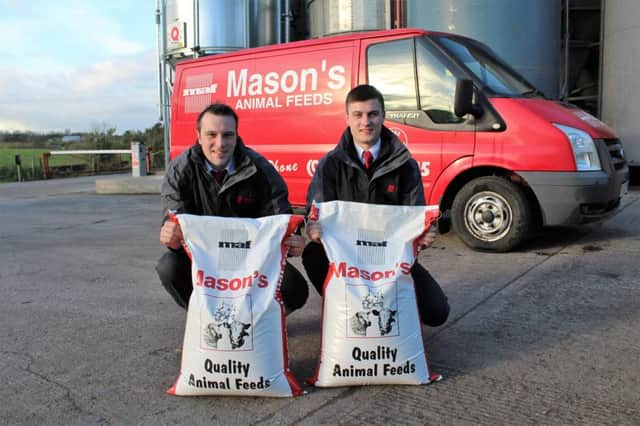Bio-Chlor dry cow nutrition proves popular


The product has been developed as a way of ensuring that cows calve down without problems and are ready to produce milk in the most efficient and effective way possible.
“Milk producers know full well that the management practises they put in place during the dry period will determine the performance of cows post calving,” said mason’s managing director Colin Purdy.
Advertisement
Hide AdAdvertisement
Hide Ad“And avoiding problems associated with a large negative energy balance plus metabolic disorders such as Milk Fever and Ketosis is a priority.
“Bio-Chlor has been a key constituent of our dry cow nutrition drive for the past ten years, specifically as an integral part of our Bio-Chlor Down Calver nuts. And it has a proven track record on dairy farms throughout our catchment area.
“Customers are finding that cows calve down with excellent appetites and reach peak milk yield earlier. Metabolic problems, which can be a real problem directly after calving, have also been significantly reduced.”
So how does Bio-Chlor work?
In crude terms the dairy cow’s rumen is nothing more than a large fermentation vat containing billions of bacteria. It’s a very simple process: as bug numbers grow, the cow harvests those that are available to help meet her own nutritional needs.
Advertisement
Hide AdAdvertisement
Hide AdBut it’s only in recent times that research has focussed on identifying the conditions in the rumen that best suit microbial growth.
“The theory is very simple,” explained Paul Elwood from Bio-Chlor distributor HVS Animal Health.
“By identifying the factors limiting bacterial growth in the rumen, it is feasible to improve the efficiency of milk production and feed conversion. In other words more output per unit of feed.”
Mark Johnston, from Mason’s Animal Feeds pointed out that the Down Calver Nut is fed at a rate of four kilos per day during the three weeks leading up to calving.
Advertisement
Hide AdAdvertisement
Hide Ad“It is offered with grass silage or, if available, 50% whole crop and 50% grass silage plus straw to appetite. Freshly calved cows and heifers reach peak yields much more quickly. These are sustained longer, resulting in greater overall lactation yield compared to those not receiving the Bio-Chlor close up pre calving nut.
“In addition to improved milk yields overall herd health is also significantly improved, with much fewer displaced abomasums, milk fevers and retained placentas plus significantly improved fertility reported by those herdowners using the Bio-Chlor approach to dry cow management.”
Mark concluded: “There is no doubt that the modern dairy cow finds great difficulty, directly after calving, in achieving the intake of feed required to meet her nutritional needs from a milk production point of view. However, there is now a strong body of evidence that the use of Bio-Chlor three weeks pre calving can help in getting around this problem and, significantly, improved conception rates, having reduced the negative energy imbalance in early lactation.